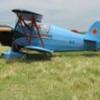
Sign in to follow this
Followers
0

Changing QNH while maintaining altitude
By
N1G, in Radar Contact Support Forum


By
N1G, in Radar Contact Support Forum